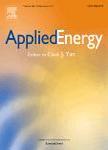版权所有:内蒙古大学图书馆 技术提供:维普资讯• 智图
内蒙古自治区呼和浩特市赛罕区大学西街235号 邮编: 010021

作者机构:Colorado Sch Mines Dept Elect Engn 1500 Illinois St Golden CO 80401 USA Colorado Sch Mines Dept Appl Math & Stat 1500 Illinois St Golden CO 80401 USA Colorado Sch Mines Dept Mech Engn 1500 Illinois St Golden CO 80401 USA
出 版 物:《APPLIED ENERGY》 (Appl. Energy)
年 卷 期:2025年第384卷
核心收录:
学科分类:0820[工学-石油与天然气工程] 0817[工学-化学工程与技术] 08[工学] 0807[工学-动力工程及工程热物理]
基 金:Colorado School of Mines’ Facilities Office National Renewable Energy Laboratory, NREL Colorado School of Mines, CSM
主 题:Electric demand forecasting District energy Renewable energy technologies Long-term load forecasting Generalized additive model SARIMA
摘 要:An accurate forecast of electric demand is essential for the optimal design of a generation system. For district installations, the projected lifespan may extend one or two decades. The reliance on a single-year forecast, combined with a fixed load growth rate, is the current industry standard, but does not support a multi-decade investment. Existing work on long-term forecasting focuses on annual growth rate and/or uses time resolution that is coarser than hourly. To address the gap, we propose multiple statistical forecast models, verified over as long as an 11-year horizon. Combining demand data, weather data, and occupancy trends results in a hybrid statistical model, i.e., generalized additive model (GAM) with a seasonal autoregressive integrated moving average (SARIMA) of the GAM residuals, a multiple linear regression (MLR) model, and a GAM with ARIMA errors model. We evaluate accuracy based on: (i) annual growth rates of monthly peak loads;(ii) annual growth rates of overall energy consumption;(iii) preservation of daily, weekly, and month-to-month trends that occur within each year, known as the seasonalityof the data;and, (iv) realistic representation of demand fora full range of weather and occupancy conditions. For example, the models yield an 11-year forecast from a one-year training data set with a normalized root mean square error of 9.091%, a six-year forecast from a one-year training data set with a normalized root mean square error of 8.949%, and a one-year forecast from a 1.2-year training data set with a normalized root mean square error of 6.765%.